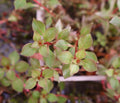Marimo Moss Balls
Marimo Moss Balls are enticing because they resemble charming little hairy balls in water. When you hold them in your palm, they feel smooth and velvety. Despite the fact that it is not a ball but rather a cluster of well-structured algae,
Along with it, these plants are quite simple to care for and will grow for a long time with less attention. And, using a simple propagation strategy, you can simply get as many Marimo moss balls as you like without ever having to purchase any more.
What Exactly is a Marimo Moss Ball?
Marimo moss balls are tangled balls of solid green algae. "Marimo" is a Japanese term that means "ball algae." It is simple to learn how to grow moss balls.
Marimo moss ball maintenance is surprisingly straightforward, and it's a lot of fun to watch them develop. Continue reading to find out more. Marimo Moss Ball Specifics Cladophora aegagropila is the botanical name for these intriguing green balls, which explains why they are also known as Cladophora balls.
The term "moss" ball is misleading since Marimo moss balls are made completely of algae, not moss.
Reproduction of a Moss Ball
Moss balls may reproduce in two ways: spontaneously or artificially. Growing at just 5 mm per year, marimo might take a long time to reach reproductive size.
Natural reproduction entails a little lump growing off of an existing marimo and ultimately falling off and growing on its own.
However, if you have a bigger moss ball, you may wish to propagate it by squeezing out all of the water and splitting it into halves, thirds, or quarters, depending on its size. To encourage circular development, keep rotating it in the tank and delicately rolling it in your hands on a regular basis.
To take care of a Marimo moss ball, here are the things you need to understand..
- A decent tank or container is required. The container size is unimportant as long as the Marimo has enough room to move.
- Even though it's not necessary, adding some pebbles to the bottom of the container could make it look great.
- Fill the container with fresh water where you'll keep your marimo. You may use tap water, but it's best to let it sit for 24 hours before using it.
- Insert the marimo into your container. Make sure that the marimo is completely submerged in water. Marimo will sometimes float due to trapped air bubbles on the exterior. They'll sink in a few days.
- Every two weeks, replace the water. While changing the water, you can take the marimo ball out of the water. Marimo can live without water for many days as long as they do not completely dry up.
- Every now and then, gently stir the water in the tank about so the marimo may roll to a new side. This helps it maintain its spherical form. Furthermore, if the tank's walls get coated with algae, be sure to clean them.
Fertilizer
If you retain them in their ball configuration, they will not need fertilizer to grow. This is due to the fact that they are not planted in the substrate where the fertilizer will be applied.
Furthermore, they extract nutrients and minerals straight from the tank water to generate food. As a result, you may add supplements such as nitrogen, potassium, and phosphorus pills to the water, but just a few at a time.
Trimming and Maintenance
Marimo moss balls, as you may know, are nothing more than hairy moss balls. So there isn't much you can do to keep them in shape.
They naturally expand in a consistently radial pattern. However, if they are left undisturbed at a location, the underside may not develop correctly.
To maintain a consistent round shape, flip it every few days so that all of the faces develop at the same pace. This will keep the form circular for a long time.
If you still believe it is growing unevenly, you may trim the surplus bits using scissors to make it more spherical. Do not be concerned; trimming a few uneven portions is quite safe.
Tips for making marimo moss balls in general:
This plant does not require nutrition, so you will not need to feed it. To protect the marimo from becoming brown, keep them away from direct sunlight.
They may also be housed alongside less aggressive aquatic species like tiny shrimp, snails, and fish. It is advised to do research before introducing other creatures into the same tank as the marimo.
















